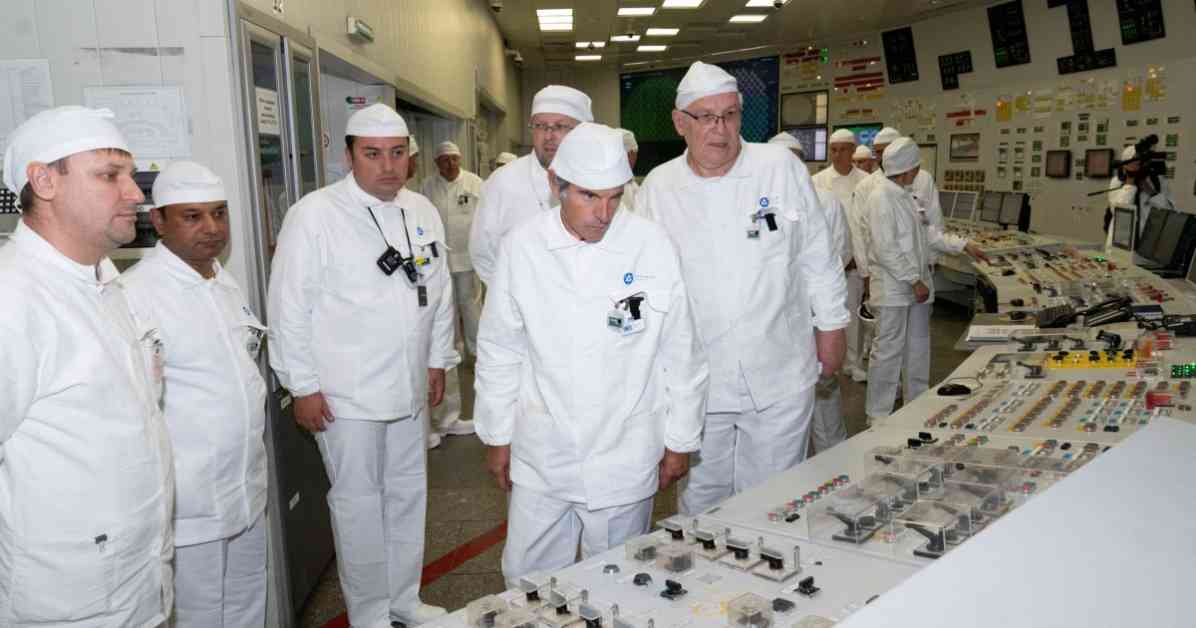Russian Nuclear Plant’s Vulnerable Design Raises Concerns About Safety
International Atomic Energy Agency (IAEA) director general Rafael Grossi recently visited the Kursk Nuclear Power Plant (KNPP) in Russia, raising concerns about the facility’s safety and vulnerability to potential attacks. The fears of a nuclear accident in western Russia have intensified following Vladimir Putin’s claims that the power plant came under fire amid the ongoing conflict with Ukrainian forces.
The KNPP, located in the Kursk region, is currently under the control of Ukrainian troops, with a territory equivalent in size to Los Angeles. Grossi highlighted the heightened risk at the facility, emphasizing that the reactor’s design leaves it “extremely exposed” to attacks. The RBMK-type facility, similar to Ukraine’s Chernobyl nuclear plant, lacks the containment dome and protective structure found in modern power plants, relying solely on a normal roof for protection.
During a news conference, Grossi expressed his concerns about the facility’s vulnerability, stating, “The core of the reactor containing nuclear material is protected just by a normal roof. This makes it extremely exposed and fragile, for example, to an artillery impact or a drone or a missile. This is like the building across the street, with all this nuclear material.” He emphasized the lack of specific protection for the core and the potential serious consequences of an impact on the reactor.
Grossi’s visit to the KNPP revealed evidence of drone strikes in the area, further highlighting the risks associated with the facility’s vulnerable design. While the Kremlin has accused Ukrainian forces of attacking the plant, the Ukrainian army has denied these claims. Grossi noted the impact of the drone strikes during his visit, underscoring the need for heightened vigilance and security measures at the site.
Despite the ongoing conflict in the region, the KNPP continues to operate under close to normal conditions. The IAEA is also monitoring the situation at Ukraine’s Zaporizhzhia plant, which has been occupied by Russian forces since the start of the invasion. Grossi plans to travel to Ukraine to meet with President Volodymyr Zelensky to discuss the situation at the facility and ensure nuclear safety and security in the region.
The occupation of the Kursk region by Ukrainian forces marks the largest incursion into Russia since World War II, resulting in the occupation of approximately 500 square miles. Putin has deployed reinforcements to the region, but the extent of these movements and their impact on the ongoing conflict in eastern Ukraine remains unclear. The Russian defence ministry reported heavy casualties among Ukrainian troops in Kursk, with thousands killed or injured and significant losses in tanks and armoured vehicles.
As the situation in western Russia continues to escalate, concerns about the safety and security of the KNPP persist. The vulnerability of the facility’s design and the risks posed by potential attacks underscore the need for enhanced protection and vigilance to prevent a nuclear accident in the region. The international community, including the IAEA, remains dedicated to promoting nuclear safety and security to prevent any catastrophic events at nuclear facilities worldwide.












